By Julietta Jameson
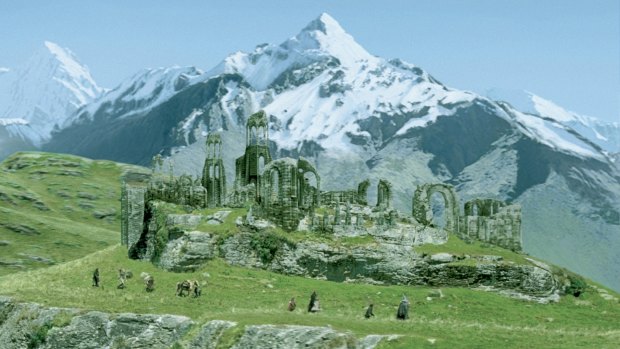
The release of The Fellowship of the Ring, in December, 2001, was a watershed moment for New Zealand's reputation as a tourism destination.
When The Fellowship of the Ring premiered at the Odeon Leicester Square in London on December 10, 2001, hundreds of millions of copies of JRR Tolkien's early-to-mid 20th century fantasies set in Middle Earth had already circulated.
The movie became a blockbuster hit, making $US880 million ($1.23 billion). And as audiences lapped up Kiwi director Peter Jackson's visual recreation of Tolkien's world, book sales rocketed again. But alongside the cinematic and publishing stars, another also rose: it was New Zealand, the place masquerading as Middle Earth.
Up to that point, most of the world might not have been able to pinpoint New Zealand on a map, let alone contemplate visiting it.
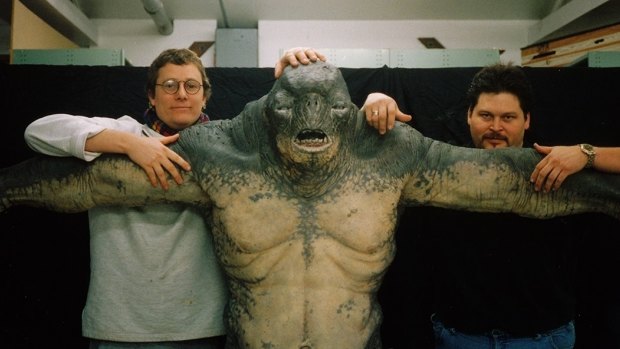
Sir Richard Taylor (left) with a cave troll during the production of The Fellowship of the Ring.
Yet, in the five years after that premiere, leisure visitors to New Zealand increased by 40 per cent, and tourism became the nation's second biggest industry behind dairy, with one New Zealand tourism official calling The Lord of the Rings "the best unpaid advertisement New Zealand has ever had".
Middle Earth wasn't the only driver, of course. In the pre-pandemic 21st century, travellers got more adventurous, spread their wings further. "Off the beaten track" became the mantra for many and New Zealand's unspoiled landscapes and wholesome image gained wide appeal.
But even so, 20 years and another five Middle Earth movies (a further two Lord of the Rings films, three Hobbit features) later, almost one in five visitors (just before COVID) still cited The Lord of the Rings as a reason they got interested in New Zealand as a holiday destination.
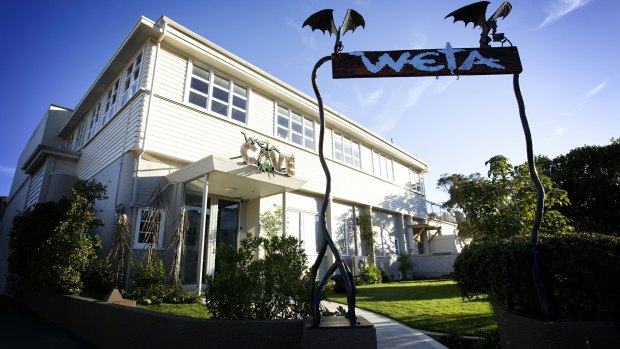
The Weta Cave in Wellington.
The impact on New Zealand tourism was not anticipated, let alone planned for. And those expecting this perhaps least of all were those involved in making the movies.
Co-founded by Richard Taylor and Tania Rodger, Weta Workshop (wetanz.com) is the Oscar-winning company making physical special effects such as creatures, costumes and sets that contributed immensely to the epic look and believability of the films. Richard Taylor recalls the first time people started showing up at the outfit's HQ in Miramar, a suburb of Wellington.
"From the moment the movies came out, we started getting buses of people pulling up in front of our workshop, and I would wave at them through the window," says Taylor. "If I had a moment, I'd pop down and get on the bus, give them a talk, or just chat with them and tell them about what we were up to and who we were and so on. But it became painfully evident that we actually needed to pull a finger out and do something rewarding for the people that dropped in."
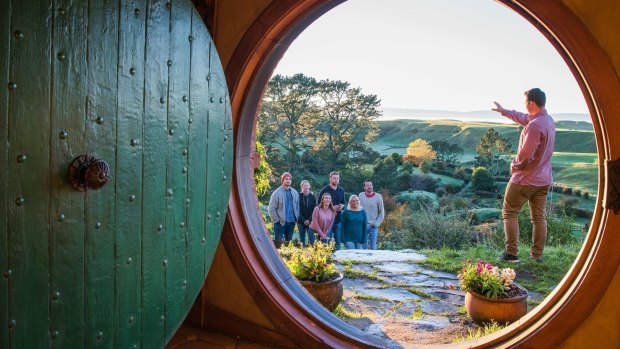
Prior to the pandemic, the farm where Hobbiton was built attracted more than 650,000 visitors a year.
Thirteen years ago, they opened "a little tiny retail experience in the back corner of our workshop to sell out collectibles," he says. And from that came the Weta Cave, an experiential display of creatures, sets and audio visual assets, and then the bigger Weta Cave Experience to cater for increased demand and larger groups.
"I personally did a great deal of the build on the Weta Cave," says Taylor, who now counts regular visitors to it amongst his friends. Some even stay with him and his wife, Tania Rodger, at their home.
"There's this weird misconception that fans must be people you don't necessarily wish to engage with. That's not the case because we are fans ourselves," he says.
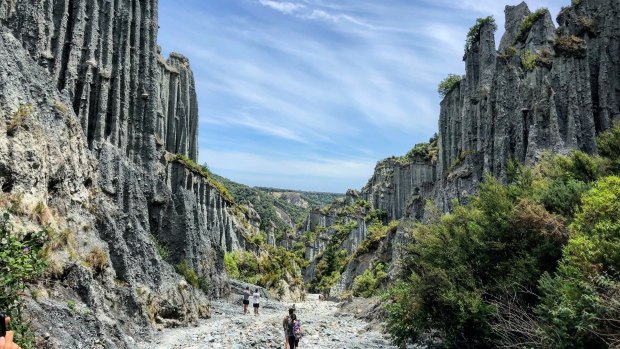
Putangirua Pinnacles featured in The Lord of the Rings trilogy as the 'Paths of the Dead'.
It's that incredibly Kiwi way – the friendliness, the welcome, the hands-on approach – that helped the movies make a transcendent emotional connection, inspiring flight bookings and itinerary planning from fans far and wide.
Taylor says while the concentration of diverse landscapes "from pastoral Hobbiton to the horrors of Mordor" were one thing, that national character was a whole other. "These weren't films made by just one director, by a producer, by a studio, by a crew. This was a set of movies made by a nation of people, bringing their energy and effort behind every endeavour on these movies. You can feel it in the films. It is a big part of why I think these specific films were able to be made so beautifully here."
Russell Alexander owns and runs Hobbiton (hobbitontours.com), the 5.5-hectare farm turned botanical movie set, which represented Tolkien's Hobbit-inhabited Shire throughout the movies. Before COVID struck, it was attracting 650,000 people a year.
Like Taylor, he attributes the Matamata site's longevity – it's been more than seven years since the last Hobbit movie was released and it still reduces visitors to tears – to its New-Zealandness. And steering clear of the American theme park model also helped.
"They do fantastic parks and I've gone there to learn things like how to manage visitors. But if you try to copy them, you will do a really bad example of it," he says. "So, what you do is be authentic to yourself. The experience we are providing is authentic, incorporating rural New Zealand and the best of the scenery and the landscapes and everything from the movies and what's involved in making a major movie."
Alexander says that rather than providing a Hobbit version of Disneyland with recreations and actors dressed as characters, the key to Hobbiton's success is its "storytelling" approach, taking people behind the scenes.
Perhaps unsurprisingly, self-confessed Tolkien fan Richard Taylor also loves Hobbiton.
"I'm a huge and passionate fan of Hobbiton and I love going there myself. To me, it's everything that Disney would have wished Disneyland could be if they didn't have to deal with massive numbers of people. There is an earthly sort of beauty and wholesomeness to it that you just can't do when you're driving millions of people through a place and it feels so authentic and so real, literally as if you've been dropped into another world. It is probably one of the most magical places that you could hope to visit on the planet."
And New Zealand's enduring appeal?
"Once you unleash into the country, you are interacting with a nation of people that have a different perspective on the world than maybe any other country. Arguably that's because we're a small island nation. But we are very passionate, patriotic individuals, who have a pride to share in what we have here with others."
FIVE LORD OF THE RINGS SITES YOU CAN VISIT
TONGARIRO NATIONAL PARK
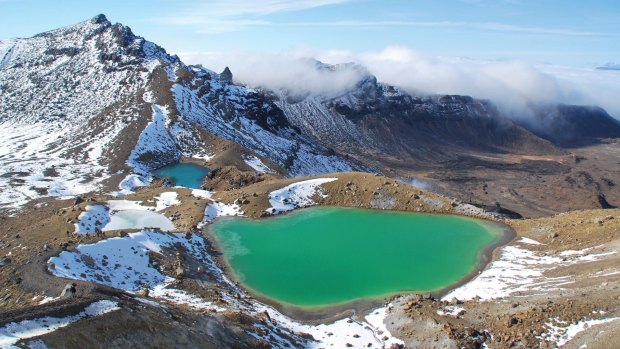
New Zealand's first national park and a UNESCO World Heritage site, the dramatic, volcanic Tongariro on the North Island near Lake Taupo was chosen to represent Mordor, home to the Dark Lord Sauron. It's an important Maori cultural site.
MOUNT SUNDAY
In New Zealand's South Island Southern Alps, remote Mount Sunday was where Edoras, the capital of Rohan, was created. It's about one and a half hours south of Christchurch.
KAITOKE REGIONAL PARK
With babbling brooks, and light filtering through the canopy, it's easy to think you spot elves in Kaitoke Regional Park, 50 minutes' drive north of downtown Wellington. It became Rivendell, where Frodo recovers from knife attack. The exact location is signposted from the carpark.
NELSON
The city of Nelson on the South Island is home to Jens Hansen The Ring Maker, the fine crafted jewellery company that created the 40 different rings used in production. One of the original rings is on display here and the company continues to make Lord of the Rings-inspired pieces. See jenshansen.com
QUEENSTOWN
The area around Queenstown includes several locations such as the north-western slopes of Mount Earnslaw, which featured in the opening sequence of The Two Towers. From the village of Glenorchy you can reach the forest that doubled as the elf realm of Lothlorien.
Sign up for the Traveller Deals newsletter
Get exclusive travel deals delivered straight to your inbox. Sign up now.